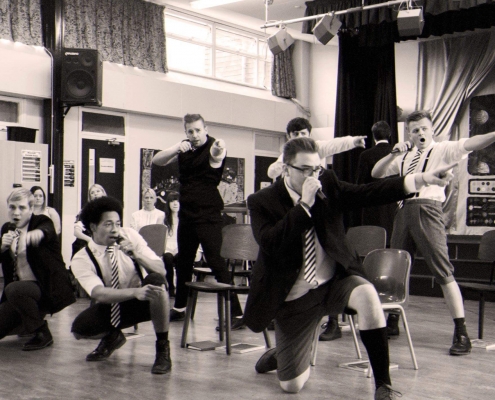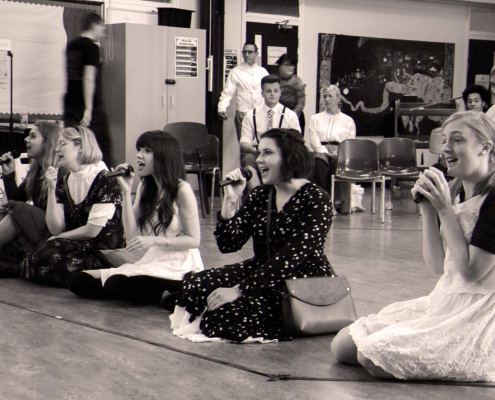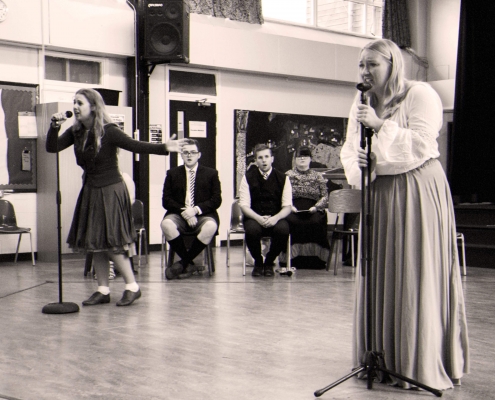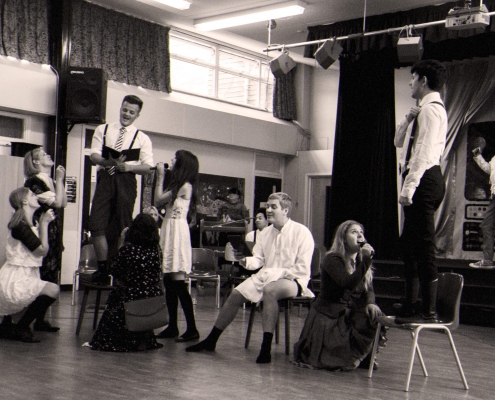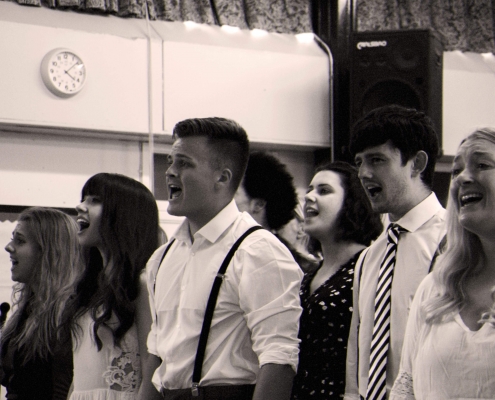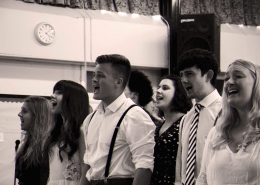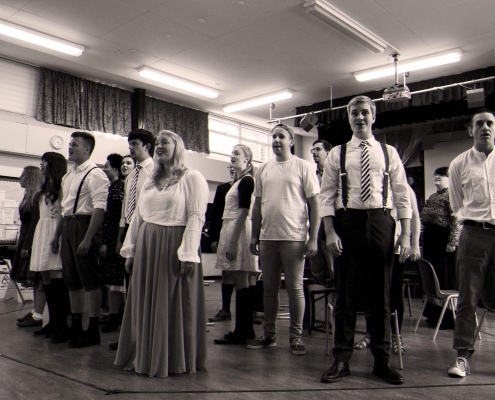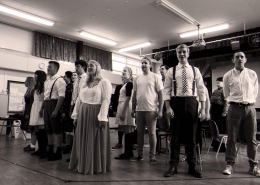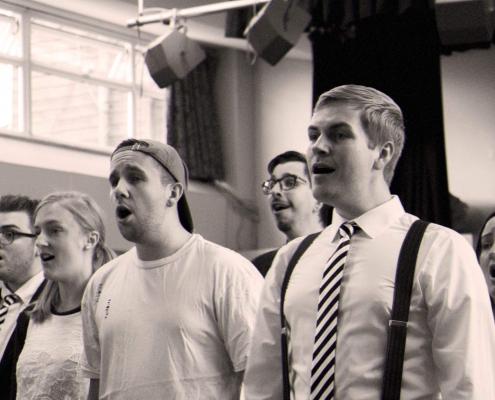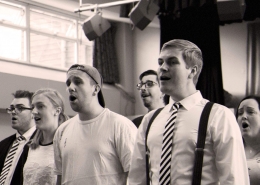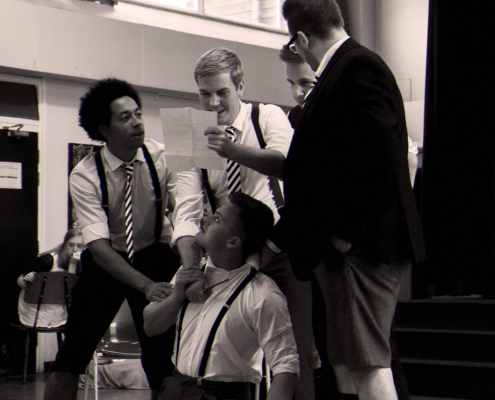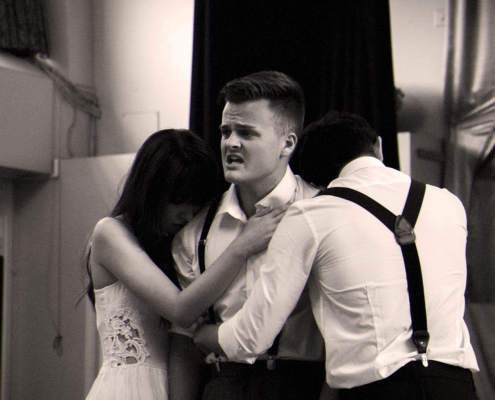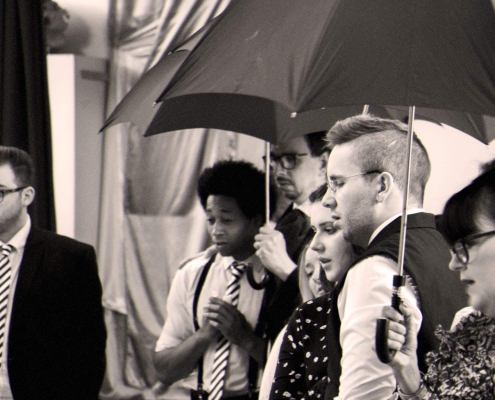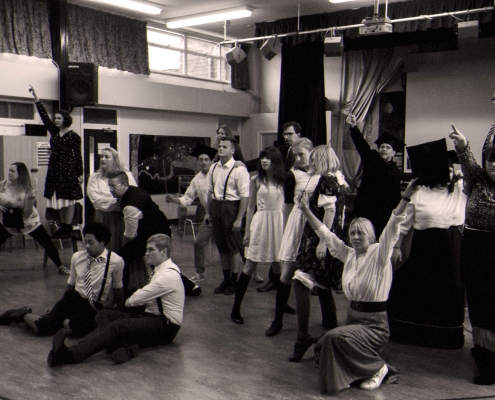AN INTERVIEW WITH SPRING AWAKENING DIRECTOR, ANDREW
With show week approaching fast we managed to find time to sit down with the talented Director of Spring Awakening, Andrew Seal.
How long have you been a member of LODS?
I joined LODS in 2005 for ANNIE GET YOUR GUN . It was my first time on stage and I was immediately hooked, subsequently performing in every LODS show up until 2013 when I tried my hand at directing with A CHRISTMAS CAROL .
What initially attracted you to direct this show?
I never managed to see the Broadway or West End productions when they were out – one of my biggest regrets now! However, I did manage to see a version produced by a London drama school about 7 years ago which was phenomenal. Simply staged in the round in a small studio, the impact of that production has stayed with me all these years. Unfamiliar with the play, I decided to buy a copy to see what the original text was actually like. I was astonished to discover all of the issues that I thought had been added into the musical to make it more relevant to modern audiences were in fact all present in the original text written in 1891. It was at that point I became slightly obsessed with it. I never imagined though that I would one day have the opportunity to direct it myself!
What inspired your concept of the stage design?
Our production owes a lot to the impact that drama school version had on me. Keeping the staging simple and putting the focus firmly on the performers was a fundamental element of our design. But with the Palace being a classic proscenium arch theatre, there was a risk of losing the intimacy that I felt was such an important part of experiencing the show.
To address this we are removing all of the theatre’s masking giving full view into the wing space, leaving the theatre wall exposed and incorporating it into the overall design with the majority of scenes limited to a raised playing space centre stage. Fortunately, I’ve been very lucky to have the amazingly talented team of Paul Ward, Kevin Ward, and Sam Blyth whose expertise have been invaluable in not only providing innovative ideas, but to then actually turn them into reality.
Did the original Broadway production influence your take on direction?
I was keen to preserve the integrity of the original production and keep to certain concepts that the writers encouraged being present in every production such as the shift in lighting from period to modern and the use of handheld microphones.
We’ve added some elements from the professional production such as the flown objects, but utilised in our own way (each object is significant to a particular scene and lit accordingly).
However there are a number scenes that we have developed differently. My Junk for example was always 3 scenes in one, in our version these have been elaborated further and include a couple of additional “vignettes” to reinforce the key messages. Blue Mirror is another scene where I wanted to ensure the pain and guilt that Melchior was experiencing was more obvious. There is also a scene in Act 2 between Hanschen and Ernst that traditionally is staged for a touch of comic relief. I felt the issues raised in that scene warranted a more serious tone and that Hanschen deserved to be portrayed as a much deeper, emotional character.
The majority of the characters are teenagers. How important was it to cast this show appropriately?
In the planning stages of the production casting was an obvious concern. We needed a cast with the maturity and experience to be able to handle the source material, but to also look young enough to believably pass as teenagers.
I needn’t have worried though as we were blessed with the most talented, young performers who demonstrated an understanding of the text and tone from the outset. Often in amateur productions you need to make compromises when casting, not so with Spring Awakening. I couldn’t have hoped for a better cast.
The cast for Spring Awakening is relatively small. Did this effect your vision?
Spring Awakening is written for only 14 actors so a big part of the pre-rehearsal work was to find ways to expand and accommodate a larger cast whilst still ensuring the integrity of the show remained. There were some very obvious solutions such as splitting the adult roles across multiple actors as opposed to one male and one female as it is written. However, full company numbers took a lot more thought and planning in order to maintain the sentiment in each scene.
What techniques did you adopt to develop characterisation?
Prior to auditions, cast members were encouraged to research live performances of musicians to base their own performances on rather than the Broadway actors. I selected mainly 90’s rock artists as their style of performing was synonymous with the angst and emotion present in much of the music of Spring Awakening. We’ve since followed this up with a variety of different rehearsal warm ups also utilising rock music.
Once the show was cast, members were given questionnaires to assist them in creating back stories and motivations to ultimately help them carve out their own characters. Seeing them develop these characters and bringing them to life over the course of rehearsals has been a really exciting part of the process for me.
What challenges have you faced and how have you overcome them?
You would think having everyone on stage the entire time and not having large pieces of scenery or significant costume changes would mean blocking the show and keeping it flowing would be easy. Not so! There have been many, many hours of plotting, planning, resets and head-scratching to make it all work. Fortunately, I’ve had the unwavering support of Musical Director Rachael Plunkett and Choreographer Laura Hurrell through the entire project without whom this would never have been possible. Simple is complicated!
Have you enjoyed this process?
Absolutely! With A CHRISTMAS CAROL I was so heavily involved with the technical elements of the show creating the animated scenery and effects while balancing my duties as Chairman at the time. I loved it, but it was a very different project to Spring Awakening. I’ve been able to focus purely on the staging and performances and with so many underlying themes, hidden messages and an original play to interpret and utilise, it has been a really exciting and engaging project for me.
If you were to direct any show what would it be?
I love shows that are built around a strong story. So anything that has been adapted from classic text such as “The Hunchback of Notre Dame” or the phenomenal Edgar Allan Poe musical “Nevermore” by Catalayst Theatre. I would also love to delve into the world of experiential and immersive theatre.
Do you have a favourite song?
My favourites have continuously changed across the rehearsal period as we tackle each one.
I have to admit that I initially struggled with Totally Fucked as a number. I felt it was a little contrived and that it was seemingly written and included in the show purely for controversy. However, once I read up on the writers intentions and seeing and hearing it in the context of our show it is now one of my favourite numbers.
However it is difficult to beat Left Behind for its delicate, haunting music balanced with stirring and powerful lyrics. James’ delivery of this number is exceptional.
Why do you think people should come see this show?
It likely to be the only chance local audiences will get to see the show in the next few years as it isn’t produced that often. When Frank Wedekind wrote the play “Spring Awakening – A Children’s Tragedy” in 1891, it was to shed light on the challenges children growing up at that time faced in the shadows of society. I think people should come and see the show to appreciate the sad fact that despite industrial revolution, technological advances and societal changes in the following 125+ years, the fundamental issues still remain today. That is the true tragedy.
To see the finished product book your tickets below. We are at the Palace Theatre from 17th – 20th October 2018. Can’t wait to see you there!


